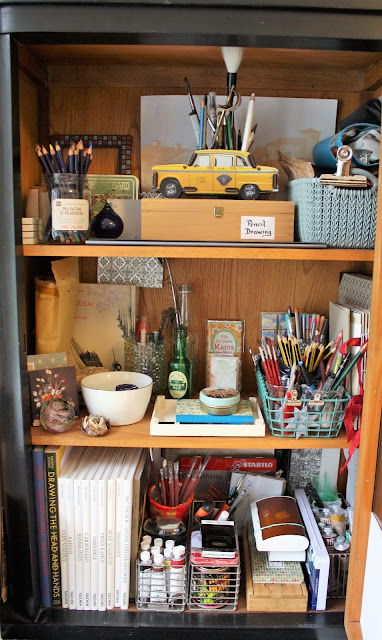step by step wolf illustration
Why computers don't like me is a mystery- I spend so much time with them, treat them with awe and reverence and generally respect the fact that they are mysteries. However they still get viruses, crash, and generally choose their own schedule. Perhaps it could have something to do with the fact that I share mine with several other people most of whom use it to watch Netflix. Still, it is annoying when after a long day I sit down to write a blog post and it crashes. Thanks to my husbands virus scan downloading skills I am back to work.
The final week of the natural history illustration online course is always a whirlwind. From sketch to finished rendering can be done. But 'if it were done when ’tis done, then ’twere well, It were done quickly.' And thus the majority of my time is spent scribbling hastily.
Thankfully week five is a series of gesture sketches and studies of mammals and birds intended to be used for the final project. So there is some basis upon which to build.
What is the difference between a bear,fox, husky, and wolf. Admittedly the last two are really quite similar but a bear is unmistakably unique from a wolf, and not only because of the fur. They both sport a ruff and have a slight hump at the shoulders. Yet drawing one or the other of them is harder than might be imagined. The width of the eyes, the length of the nose, the pupils. These are small differences that make an animal look sweet (fox) as opposed to fierce (wolf), yet the slightness of the difference creates unique difficulties for the artist trying to portray them accurately. Yes, they could be caricatured but then the drawings wouldn't be realistic.
So to cut a long story (or rather evening) short, I adjusted the face about ten times before being satisfied that it was quite obviously a wolf, et voila! The next several day were basically just coloring it in.
Drawing fur alone is easy, just make a series of quick, short lines. making it look like the pelt of an actual animal is harder- the short lines need to be organized into clumps with the individual hairs going in a specific uniform direction within each individual clump.
I began with the thickest parts of the fur, the section at the back and around the neck and shoulders. darkening the edges where those sections ended made them look thicker than the underlying area.
The least exciting area were probably the legs, with short and virtually unnoticeable fur they still needed to be defined and contain shadow.
The second to last photos were taken late in the evening and are thus darker. The following morning I took a few to post in 'normal' black and white without the vintage touch.
And there it is, one wolf, containing a wide variety of lengths, textures, and directions of fur.
Do you draw animals? Do you have experience with illustrations that take multiple days and layers? Let me know in the comments.
To get posts as soon as they are published click on the subscribe button at the top of the page or Follow by clicking on the follow button.
If you liked this post you might also like:
- Grahite Only- Buffalo step by step
- How to create a field sketchbook
- Natural history sketchbook tour
-Grizzly step by step



















Comments
Post a Comment